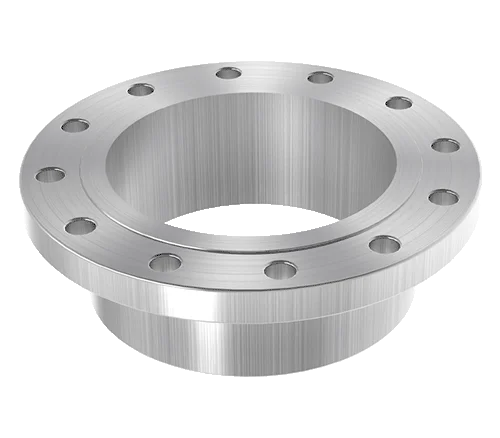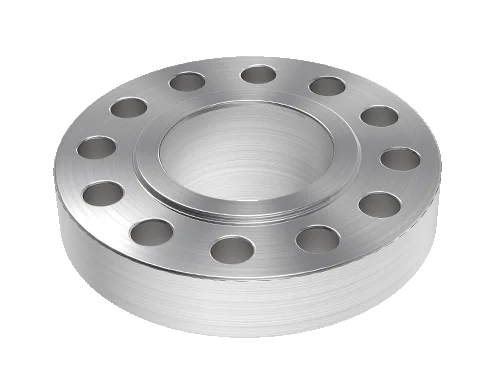Shandong Qilu lndustrial Co.,Ltd.
Exploring the Versatility of Flange Steel
Introduction

Flange steel, a crucial component in various industries, offers exceptional versatility and reliability in structural applications. From construction to manufacturing, its properties make it indispensable in ensuring structural integrity and stability. In this blog post, we delve into the multifaceted nature of steel flange, exploring its diverse applications, properties, and benefits.
Understanding Flange Steel
Flange steel, also known as structural steel, is primarily utilized in construction projects for its superior strength and durability. It consists of a wide flange beam, often fabricated from carbon steel or alloy steel, featuring a distinct flange on either side. This design provides enhanced load-bearing capacity, making it ideal for supporting heavy loads in buildings, bridges, and other structures.
Applications of Flange Steel
The versatility of steel flange extends across various industries, including:
- Construction: Steel flange beams serve as primary structural elements in constructing commercial buildings, residential complexes, and infrastructure projects. Their high strength-to-weight ratio allows for efficient load distribution, ensuring the stability and longevity of structures.
- Manufacturing: Steel flange finds widespread use in the manufacturing sector for fabricating machinery, equipment, and industrial components. Its robustness and malleability make it suitable for shaping into diverse forms, meeting the specific requirements of different applications.
- Shipbuilding: In the maritime industry, steel flange plays a vital role in the construction of ships, offshore platforms, and marine structures. Its corrosion resistance and ability to withstand harsh marine environments make it an ideal choice for marine applications.
- Transportation: Flange steel is integral to the transportation sector, where it is used in the fabrication of railway tracks, bridges, and infrastructure for roads and highways. Its durability and load-bearing capacity ensure the safe and efficient movement of goods and passengers.
- Energy Sector: In power generation facilities, steel flange supports the infrastructure for generating, transmitting, and distributing electricity. Its reliability and structural integrity are critical for maintaining operational efficiency and safety in power plants and substations.
Properties of steel flange
Flange steel exhibits several key properties that contribute to its widespread use:
- High Strength: Flange steel possesses exceptional strength, allowing it to withstand heavy loads and structural stresses.
- Ductility: Its ductile nature enables steel flange to undergo deformation without fracturing, ensuring resilience against dynamic loads and seismic forces.
- Corrosion Resistance: Through proper surface treatment and coatings, steel flange can resist corrosion, extending its lifespan in challenging environments.
- Weldability: Steel flange is readily weldable, facilitating efficient assembly and construction processes while maintaining structural integrity.
Advantages of Flange Steel
The use of flange steel offers numerous advantages, including:
- Cost-Effectiveness: Steel flange’s long-term durability and low maintenance requirements result in cost savings over its lifespan.
- Versatility: Its adaptability to diverse applications makes steel flange a versatile choice for various industries and projects.
- Sustainability: Steel flange is recyclable and contributes to sustainable construction practices, reducing environmental impact.
- Structural Integrity: The inherent strength and reliability of steel flange ensure the structural integrity and safety of buildings and infrastructure.
Case Studies

Comparative Analysis of Steel Flange in Construction Projects
| Project | Flange Steel Usage | Benefits |
|---|---|---|
| High-Rise | Main structural | Superior load-bearing capacity |
| Residential | Beams and columns | Cost-effective and durable solution |
| Bridge | Girders and piers | Resistance to corrosion and fatigue |
Conclusion
Flange steel stands as a cornerstone in modern construction and manufacturing, offering unparalleled strength, versatility, and reliability. Its widespread applications across various industries underscore its importance in ensuring the stability and sustainability of structures and infrastructure. As technologies evolve and demands grow, the continued exploration and utilization of steel flange will remain integral to advancing engineering and architectural endeavors.
FAQ
Q:What are the common types of flange steel?
A:Common types include wide flange beams, I-beams, H-beams, and channel beams, each with specific profiles and dimensions tailored to different applications.
Q:How is flange steel manufactured?
A:Flange steel is typically manufactured through hot rolling or extrusion processes, where molten metal is shaped into the desired profiles and then cooled to form solid beams.
Q:What factors should be considered when selecting flange steel for a project?
A:Factors such as load requirements, environmental conditions, corrosion resistance, and cost-effectiveness should be considered to determine the most suitable type and grade of flange steel for a project.
